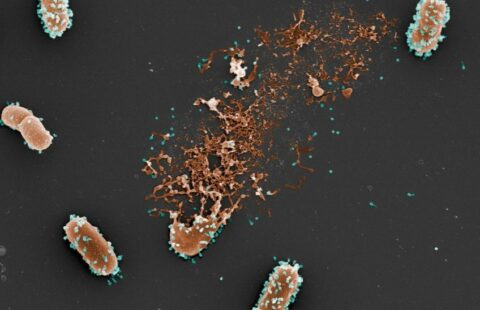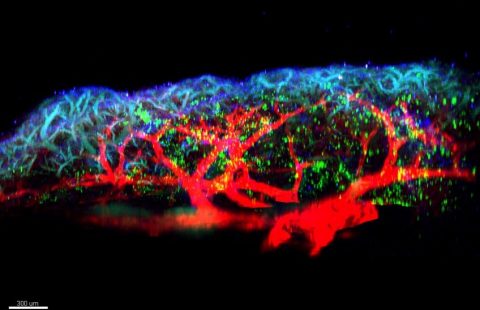Genome editing in primary cells and in vivo using viral-derived “Nanoblades” loaded with Cas9/sgRNA ribonucleoproteins
Philippe E. Mangeot1*, Valérie Risson2§, Floriane Fusil1§, Aline Marnef3§, Emilie Laurent1, Juliana Blin1, Virginie Mournetas4, Emmanuelle Massouridès4, Thibault J. M. Sohier1, Antoine Corbin1, Fabien Aubé5, Marie Teixeira6, Christian Pinset4, Laurent Schaeffer2, Gaëlle Legube3, François-Loïc Cosset1, Els Verhoeyen1, Théophile Ohlmann1, Emiliano P. Ricci1,5*.
1 CIRI – International Center for Infectiology Research, Inserm, U1111, Université Claude Bernard Lyon 1, CNRS, UMR5308, Ecole Normale Supérieure de Lyon, Univ Lyon, F-69007, Lyon, France.
2 Institut NeuroMyoGène, CNRS 5310, INSERM U121, Université Lyon1, Faculté de Médecine Lyon Est, Lyon, France.
3 LBCMCP, Centre de Biologie Intégrative (CBI), CNRS, Université de Toulouse, UT3, 118 Route de Narbonne, 31062 Toulouse, France.
4 I-STEM/CECS, Inserm UMR861 28 rue Henri Desbruères, 91100 Corbeil Essonnes,France.
5 Laboratory of Biology and Modelling of the Cell, UnivLyon, ENS de Lyon, Univ Claude Bernard, CNRS UMR 5239, INSERM U1210, Laboratoire de Biologie et Modélisation de la Cellule, Lyon, France.
6 SFR BioSciences, Plateau de Biologie Expérimentale de la Souris (AniRA-PBES), Ecole Normale Supérieure de Lyon, Université Lyon1, CNRS UMS3444, INSERM US8, 69007, Lyon, France.
Nature Communications : https://doi.org/10.1038/s41467-018-07845-z



